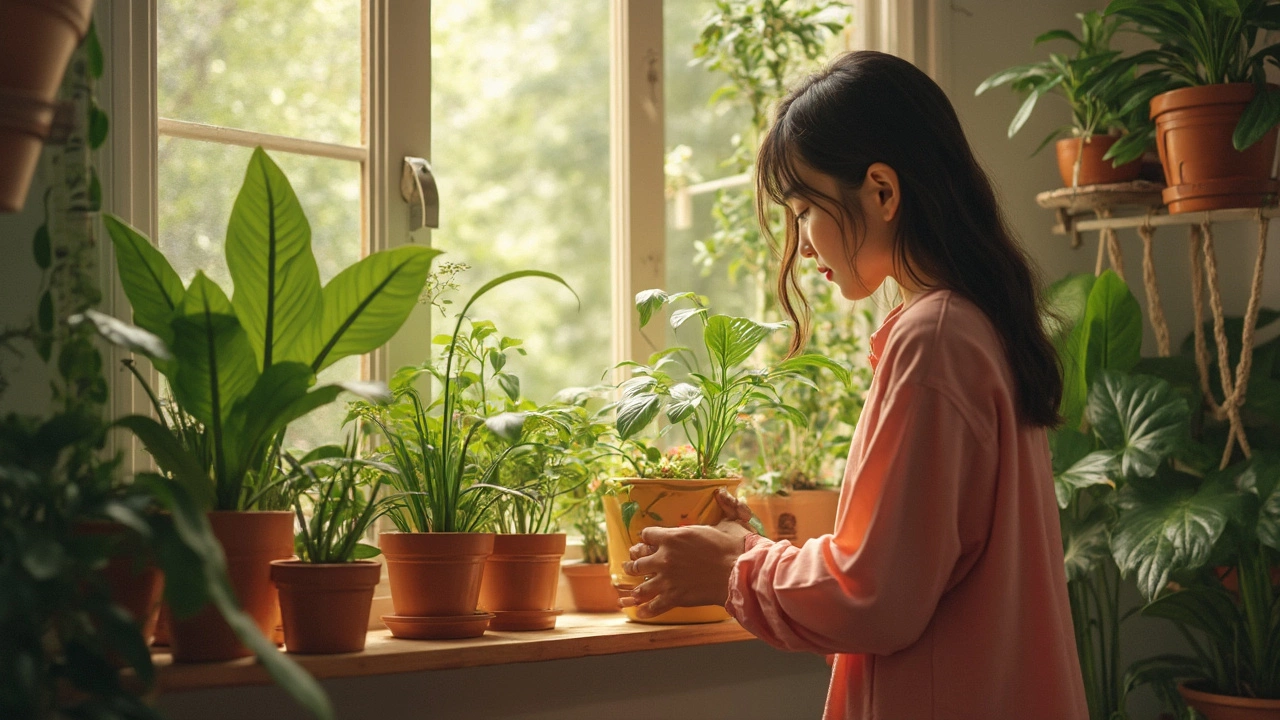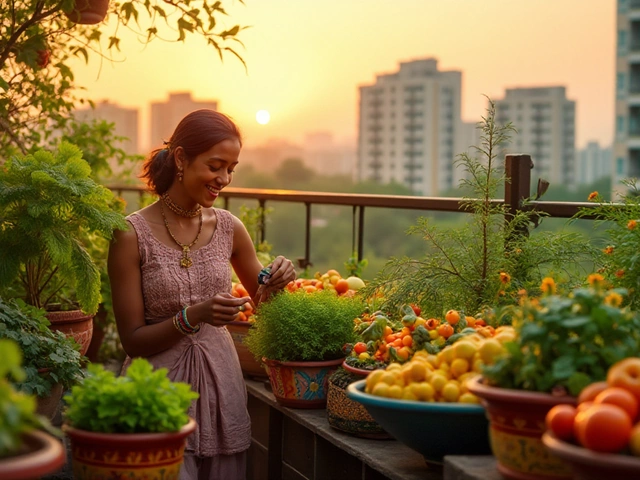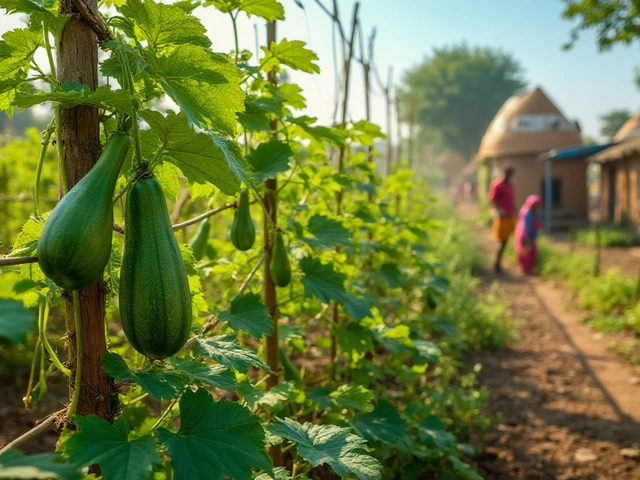If you water your houseplants on the same day each week, you’re likely getting it wrong. Houseplants just don’t care about your calendar—they care about their own needs, which change with light, temperature, pot size, and even the time of year.
So how do you know when your plant actually needs a drink? Forget the 'once a week' rule you see floating around. That usually leads to mushy roots or crispy leaves, depending on the plant (and your luck). Instead, grab your finger—yep, that’s your best tool right now—and poke it into the soil about an inch deep. Dry? Time for water. Still damp? Let it be.
Some plants are drama queens (looking at you, ferns), while others don’t mind being ignored for a while (succulents, anyone?). If you’ve ever killed a cactus by overwatering, you’re not alone. It happens to almost everyone who trusts blanket advice instead of checking the actual soil.
- Why a One-Size-Fits-All Watering Schedule Fails
- Factors That Affect Water Needs
- The Best Ways to Check If Your Plant Needs Water
- Common Watering Mistakes to Avoid
- Pro Tips for Happier, Healthier Plants
Why a One-Size-Fits-All Watering Schedule Fails
You’ve probably heard advice like “Water once a week” or “Give your houseplant a cup of water every Sunday.” Sounds simple, right? Well, it’s way more complicated. Plants are like roommates with wildly different habits—one is always thirsty, another barely touches their glass.
Here’s why those universal rules just don’t work. Most houseplants come from different parts of the world and are wired for unique living conditions. A cactus from a dry desert and a peace lily from a swampy rainforest do not play by the same rules. Even two plants in the same room can dry out at different speeds if one gets more sunlight than the other, or if its pot is a different shape or material.
Check out some real data showing just how much indoor conditions mess with how fast soil dries out:
| Plant Type | Location | Days To Dry Out |
|---|---|---|
| Snake Plant | Bright Window | 7-10 days |
| Peace Lily | Shady Corner | 2-4 days |
| Spider Plant | Near Heater | 2 days |
| Cactus | Cool Spot | 14+ days |
Humidity, sunlight, temperature, even the type of pot—these all change how often your plant gets thirsty. In the winter, rooms are drier and plants need water less often. In summer, things speed up, especially if you have the AC blasting or a window open. There’s no magic number of days that always fits.
You might recognize this problem too: blindly following schedules is how overwatering kills more plants than drought. The Royal Horticultural Society puts it perfectly:
“Feeling the surface of the soil to check if it’s dry is a far more reliable guide to watering needs than following a strict calendar.”
The lesson? Don’t treat your indoor plants like robots on a factory schedule. Tune in to each plant’s real needs, not your planner. Your plants will be a lot happier for it—and so will you when they stick around for years.
If you ever wondered why your friend with a windowsill jungle waters their monstera twice a week and their jade maybe once a month, now you know. Watering houseplants is about paying attention, not keeping appointments.
Factors That Affect Water Needs
There’s no magic rule for watering indoor plants, because a bunch of things impact how thirsty your green buddies get. If something changes in your home—even just the amount of light a plant gets—the watering game changes, too. Here’s what actually makes a difference:
- Light: Plants soaking up lots of sun will dry out way faster than those chilling in the shade. Got a plant close to a bright window? Check its soil more often, since it’ll use water up much faster.
- Humidity: Low humidity means your plant is basically living in a mini-desert, so water evaporates faster. This is a big deal in winter when heaters run non-stop. Want to help? Group plants together or use a pebble tray to bump up moisture in the air.
- Temperature: Hot rooms speed up drying. If your apartment turns into a sauna in summer, your plants will need more water. In cooler spots, they’ll need less.
- Pot and Soil: Plants in small pots dry out quicker than ones in big pots. Terracotta pots also suck water from the soil faster than plastic. Fast-draining soil dries fast; dense soil keeps moisture longer.
- Plant Type: Not all plants are made equal. Succulents and cacti would rather go bone dry for a bit, while tropical plants and ferns need more frequent drinks. Check the needs of what you actually own—don’t just guess based on looks.
- Seasonal Changes: Most houseplants slow down in winter and grow fast in summer. More growth means more water, so your schedule probably needs to change as the seasons do.
Bottom line: Pay attention to what’s going on around your plant—not just the clock. The more you notice these factors, the more dialed-in your watering routine will be. If your watering houseplants routine hasn’t changed all year, there’s a good chance something’s off.

The Best Ways to Check If Your Plant Needs Water
No high-tech gadgets required—just your senses and maybe a chopstick from your last takeout. Spotting when a plant needs water can feel like a guessing game, but there’s a handful of tried-and-true tricks that plant folks swear by. The most important thing? Never trust just your calendar. Your plant's needs can change week by week.
- Touch Test (The Finger Method): This is a classic because it works. Stick your finger about an inch into the soil. If it feels dry at that depth, it’s time to water. If it’s still moist, skip the watering can. Simple, fast, and reliable.
- Chopstick or Skewer Trick: If you don’t want dirty fingers, poke a wooden skewer into the soil. Pull it out after a minute. If it comes out clean, the soil’s dry. If there’s damp soil clinging to it, your plant’s still okay for now.
- Soil Color and Texture: Dry soil looks lighter than wet soil and can even pull away from the edges of the pot. It also feels crumbly to the touch, not sticky or cool.
- Pot Weight Test: Lift the pot after you water and later when it’s dry. There’s a big difference in weight you’ll notice after a few rounds. Lighter means time to water, heavier means hold off.
- Leaf Signals: Some plants actually tell you when they need water—drooping leaves, limp stems, or leaves that look dull instead of glossy can be reliable cues. Just check with your specific plant before relying 100% on looks, since some plants naturally droop before bouncing back after a drink.
Curious how long most common indoor plants take to dry out? Here’s a quick cheat sheet:
| Plant Type | Average Dry-Out Time (Days) |
|---|---|
| Succulents | 10-21 |
| Spider Plant | 5-7 |
| Peace Lily | 4-7 |
| Fiddle Leaf Fig | 7-10 |
| Aloe Vera | 10-14 |
Of course, all these numbers get tossed out the window if it’s super humid, you’ve just repotted, or your pot doesn’t have a drainage hole. Bottom line: use these tips as a starting point, but always double-check. When it comes to watering houseplants, it’s way better to be curious than clueless.
Common Watering Mistakes to Avoid
Watering houseplants sounds simple, right? But most plant disasters can be traced back to a few classic slip-ups. Let's tackle the trouble spots so you can dodge them for good.
- Overwatering—Easily the biggest killer of indoor plants. Roots left in soggy soil basically drown, turning mushy and brown. A study by the University of Illinois found that root rot is responsible for over 60% of houseplant deaths. Want proof? Just look at leaves turning yellow and dropping off all at once. Don’t fall for the urge to water every time you see dry leaves; sometimes, they’re overwatered, not thirsty.
- Using pots without drainage—Plants hate standing water as much as cats hate baths. Those decorative planters without holes might look great, but they trap water. This ramps up your odds of root rot. Always use a pot that lets excess water escape.
- Watering on a fixed schedule—Your plant doesn’t need hydration on a timer. Factors like light, humidity, type of plant, and season all matter more. For example, most houseplants need much less water in winter when they’re barely growing.
- Ignoring the signs—Droopy leaves aren’t always a sign of dryness. Sometimes, they’re a cry for less water, not more. Pick up and feel the soil. Get used to what 'just right' means for your plant.
- Watering the top only—Some folks just wet the surface and call it a day. But roots live deeper, so make sure water gets down where it’s actually needed.
If you’re ever unsure, err on the dry side—most indoor plants bounce back from thirst faster than they recover from soggy roots.
| Common Mistake | Consequence | How to Fix |
|---|---|---|
| Overwatering | Root rot, yellowing leaves | Check soil before watering, use drainage pots |
| No drainage | Soggy roots, fungus gnats | Always use pots with holes, empty water trays |
| Fixed schedules | Underwatering/overwatering in certain seasons | Adjust based on season and plant needs |
| Surface-only watering | Shallow roots, unhappy plants | Water thoroughly every time |
Treat each plant like its own little science experiment. Pay attention, adjust fast, and you won’t have to play the guessing game with your watering houseplants routine ever again.

Pro Tips for Happier, Healthier Plants
Want your houseplants to actually thrive? It's not just watering—they need a little more from you. A few habits and hacks can make all the difference between just surviving and full-blown, Instagram-worthy growth.
First off, always use pots with drainage holes. Plants hate soggy roots, and standing water at the bottom of a pot is a one-way ticket to root rot. If you really like a pretty pot with no holes, stick a plastic nursery pot inside it and take it out when watering.
Next, group plants with similar needs together. For example, most succulents and cacti expect dry spells, while ferns and peace lilies want more consistent moisture. Keeping thirsty and drought-loving plants apart makes it way easier to keep both types happy.
If you’ve got a lot of plants, setting a brief weekly reminder to check soil moisture can save you from forgetfulness—just don’t confuse this with a set schedule for adding water. It’s all about checking, not blindly watering.
- Dust leaves occasionally. Too much dust blocks sunlight, making photosynthesis harder for the plant. A quick wipe with a damp cloth does wonders.
- Rotate your pots every couple of weeks. Plants will grow toward the light, so turning them prevents lopsided or bendy growth.
- Use room-temperature water. Cold water can shock roots, and overly warm water isn’t great either. Let tap water sit out overnight so chlorine can evaporate, especially for sensitive plants.
- Above all, watch your plants! Droopy leaves, yellow spots, or crispy edges tell you something’s off. Trust your eyes just as much as your finger in the soil.
One surprising fact: some indoor plants (like ZZ plants and snake plants) can actually go a month or more without water, especially in cooler or low-light environments. That’s why understanding actual watering houseplants needs for each plant is key—you’ll get fewer problems and stronger, healthier growth all year round.





